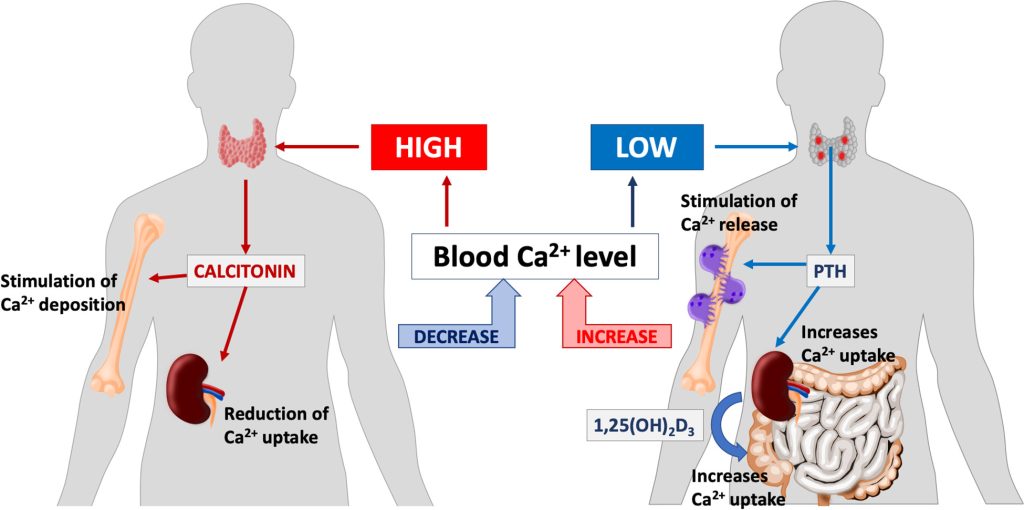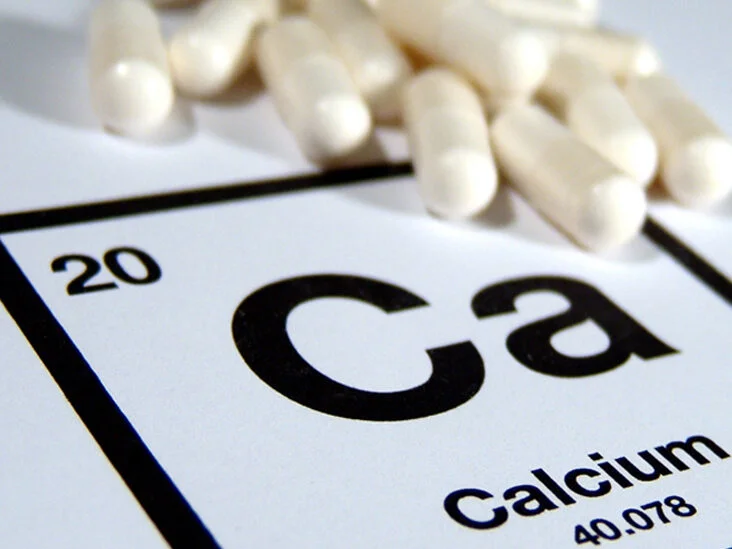The human body has more than 99% of calcium stored in bones as hydroxyapatite. Calcium is a major essential element in our body and plays an important role in skeletal muscle mineralization. It increases skeletal muscle strength and contraction and also acts as a reservoir that can be released into the serum.
Calcium maintenance is also known as calcium homeostasis. The calcium concentration in our body is regulated mainly by two hormones: parathyroid hormone and calcitonin. The most active form of metabolite is 1,25-dihydroxycalcitriol (Vitamin D3), which plays an important role in calcium homeostasis. Three main organs are also involved in calcium homeostasis: the intestine, bones, and kidneys.
Whenever the serum concentration of calcium is reduced, the parathyroid gland releases parathyroid hormone (PTH). PTH increases calcium reabsorption from bones and the kidneys. In bones, PTH stimulates osteoclasts, which leads to an increase in calcium concentration. In the kidneys, the excretion of calcium is reduced, leading to an increase in the concentration of calcium in our body.
If the calcium concentration in our body is high, calcitonin will be released from the thyroid parafollicular cells (C-cells). Calcitonin increases the stimulation of calcium deposition in bones and also increases the excretion of calcium while inhibiting the reabsorption of calcium by the kidneys. Additionally, calcitonin inhibits calcium absorption in the intestines. This results in a decrease in the calcium concentration in our body.
The ionized form of calcium is responsible for muscle contraction and has many biological functions, including phosphorylation and activating protein kinases. It is also responsible for the release of hormones such as epinephrine, glucagon, vasopressin, secretin, and cholecystokinin.



